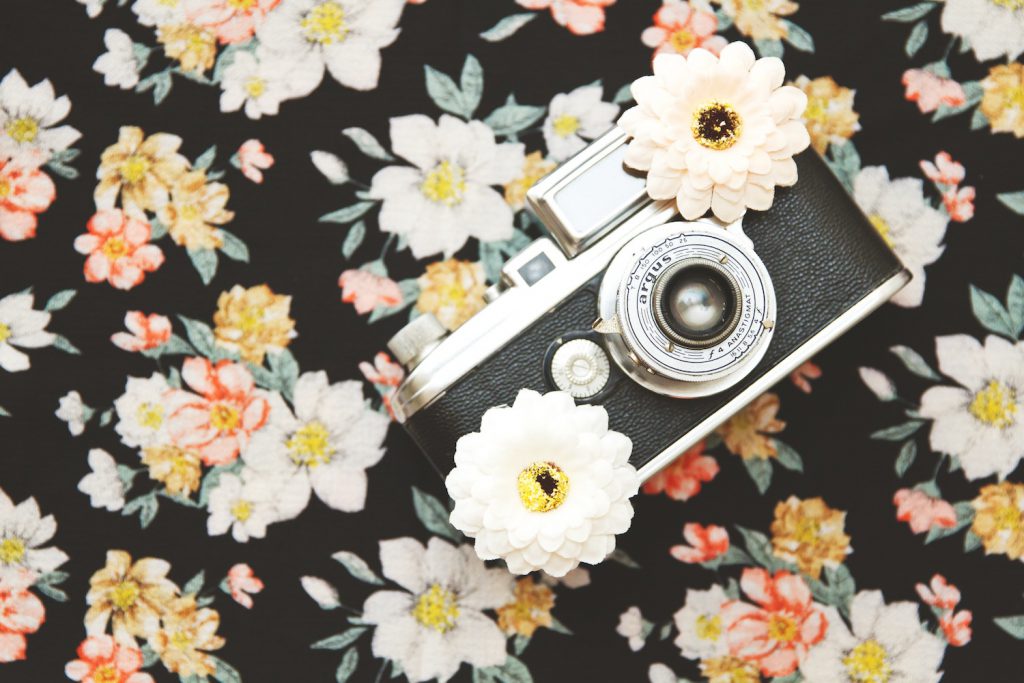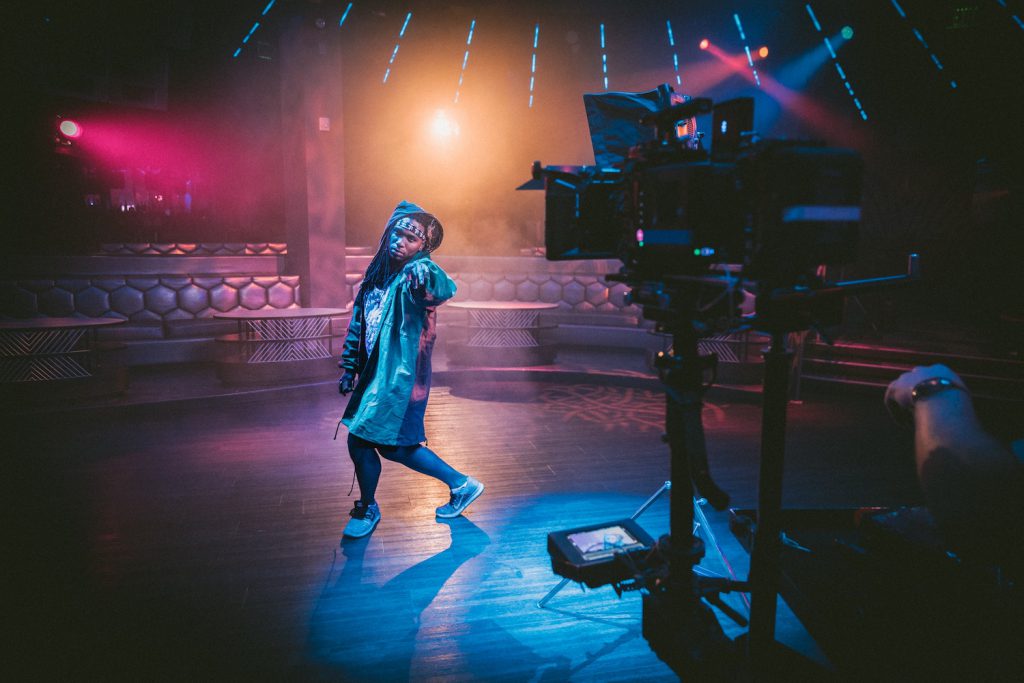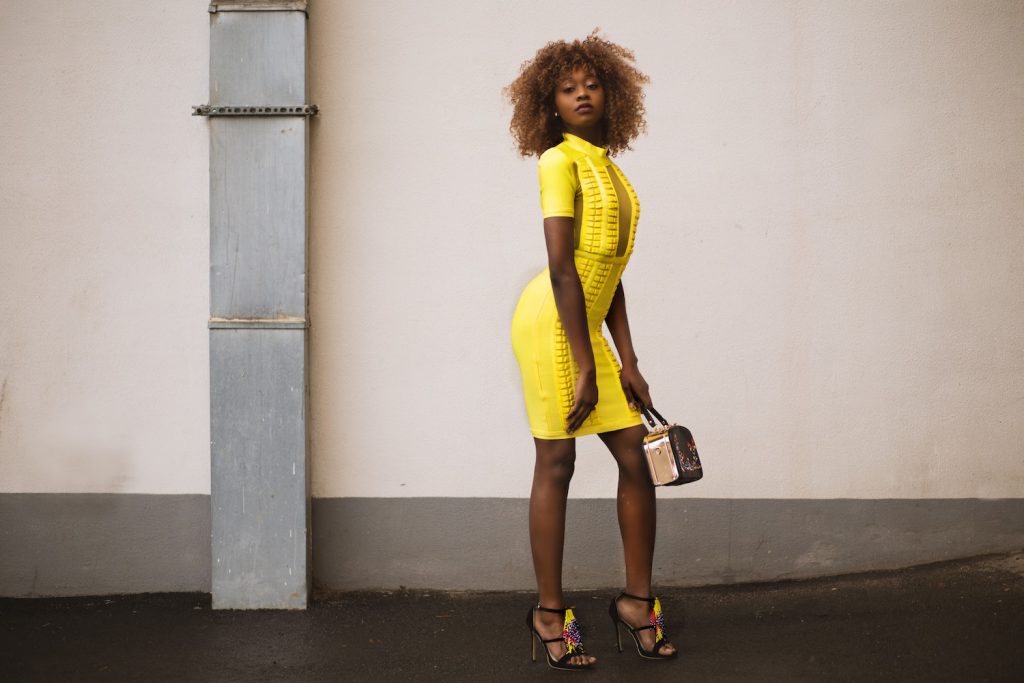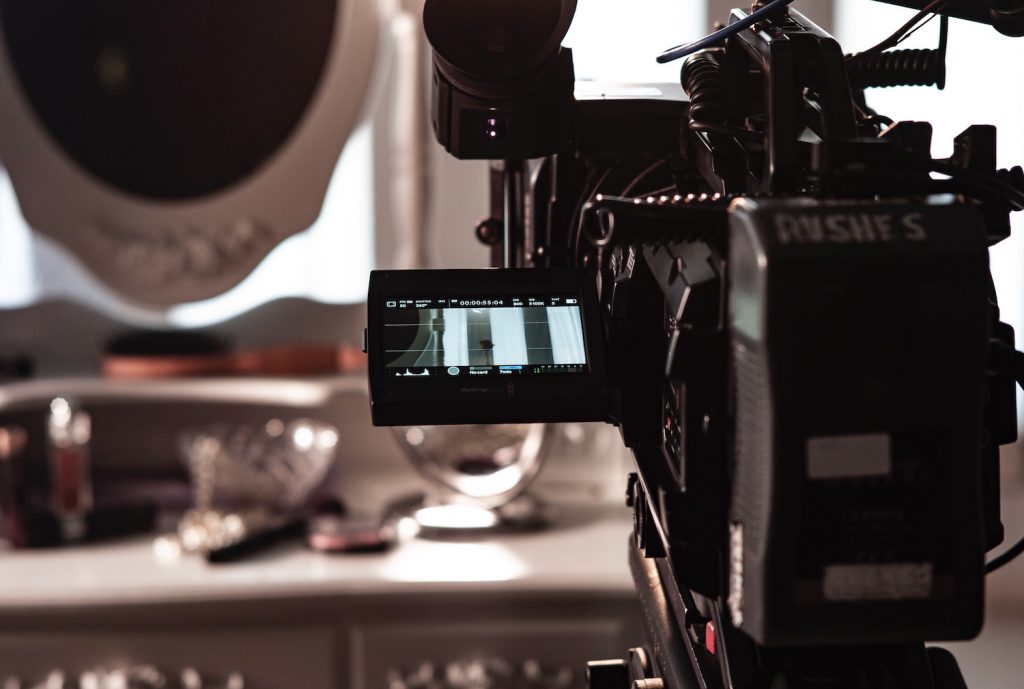Hayley Kiyoko and Positive Media Representations of Queer Women of Color
by Hannah Raffauf

Hayley Kiyoko is a Japanese-American lesbian-identified pop artist who directs her own music videos and writes songs explicitly about her experiences as a lesbian. Lesbian representation in popular culture is incredibly limited, and when it is present, it is often hypersexual and tailored towards pleasing a straight male audience. The controlling images of lesbians in popular culture strip them of agency and reduce them to a pornography category as opposed to human beings with stories to tell. Kiyoko’s videos challenge the view of lesbians through the male gaze and challenge pornographic images of lesbians by creating lesbian narratives where the focus is on character development and relationships as opposed to pleasing straight male audiences. Her music videos for “Girls Like Girls” and “Curious” provide two different representations of lesbian relationships in two different stages of life and legitimate both lesbian romantic feelings and sexual desires. In these videos, she effectively creates narratives outside of the male gaze that entertain a wide audience even without hypersexual imagery, and her work as an artist is worth academic exploration because lesbian representation in popular culture is almost non-existent. While her music videos may not be perfect and may not represent a spectrum of lesbian existence, she provides pop culture producers with an excellent framework for executing better representations.
KEYWORDS: representation, pop culture, sexuality, feminism, media studies, music video
Popular culture is the site of identity construction for a vast majority of the American population. Television, music, film, tabloids, and the Internet are a constant in our everyday lives: think of the last time you were looking at a screen or near a screen. What was on the screen? What types of media were you exposed to and how did it make you feel? The screens we look at daily bombard us with images of the ideal: the ideal woman, man, the ideal relationship, the ideal citizen, and other socially constructed ideals. The media we consume every day shapes our understandings of civilization, global happenings, and ourselves.
Postmodern theory argues that identities are products of social, historic, and cultural situations; as a result, popular culture is a vital part of how we understand and construct notions of the self (Railton & Watson). A widely available form of popular culture is the music video, wherein moving images and music come together to form short clips in which lyrics, images, and music construct a narrative or a message. Music videos serve as grounds for the construction of various identities, and for the purposes of this paper, sexuality. The construction of images in music videos, much like those of identities, are affected not only by individuals and their choices but also the sociocultural landscape around them.

Music videos subverting accepted gender and sexual norms play a vital part in deconstructing accepted social norms. Media representation shapes the general population’s ideas about different groups of people, and these representations can also empower individuals who feel underrepresented and validate the constructions of their own identities. Music videos reflect the values of the production companies and artists who make them (to an extent), so breaking from social norms expose viewers to alternative modes of representation they may not have previously considered. As feminism enters into mainstream discourse, there is a cultural shift occurring in which music videos with a social message or ones that do not contain scantily clad women are gaining more popularity. Musical artist Hayley Kiyoko embodies this shift, providing positive and complex representations of queer female relationships in her music videos for “Curious” and “Girls Like Girls.”
Hayley Kiyoko is a Japanese-American lesbian-identified pop artist who creates music and music videos specifically for a queer female audience. Her music videos are groundbreaking in that they portray relationships between women with realistic images and concepts, contrasting from how they are often portrayed with hypersexual elements. Kiyoko is in control of the narratives and the final product in her music videos because she directs or co-directs all of her videos; this allows her to have the final say in the content and its message. Artists typically do not have much say or agency in the material they release, and oftentimes it takes artists a decade into their careers to gain artistic control. Using Patricia Hill Collins’ concept of “controlling images” wherein overarching stereotypes are used in popular media to justify oppression of marginalized groups, it can be argued that Hayley Kiyoko uses her artistic agency to challenge controlling images of queer women and women of color.
In the past, most artists did not have creative control over every aspect of their work, as higher-ups and record executives had the final say in their finished products. Given her artistic agency, Hayley Kiyoko can portray lesbian relationships in a manner that is not hypersexual because she directs her music videos and has more agency than most female artists. Her creative freedom over her art allows her to step outside this mold of the stereotypical lesbian or Asian woman; even though she is on a major label, she directs her music videos and markets the images and ideas she desires to because of her agent (Spanos). Despite record labels being owned by almost exclusively white men that market images pleasurable to heterosexual men, what is considered “marketable” in our culture is shifting significantly.
Laura Mulvey’s concept of the male gaze outlines the issues of objectification and sexualization through the medium of cinema. Cinema often employs the tactic of scopophilia, or pleasure in looking, when constructing women’s bodies. Women in cinema are objectified to please heterosexual male viewers and remove the threat of female agency (Mulvey). Objectified women do not have their own plot points and only further the plot lines of male protagonists. The objectification of women in cinema is not only a direct reflection of a culture of objectification, but also a perpetuation of women’s objectification on screen. Cinema is not the only space in which women are objectified, however; popular culture products, especially music videos, often contain problematic portrayals of women’s bodies as hypersexual.
An important distinction needs to be made between agency and the male gaze. Music videos operating within the male gaze tend to focus on women’s separate body parts such as breasts, legs, or buttocks, and women are the not the ones initiating sexual contact. Women are sexual objects to be looked at through the male gaze, and nothing else. Agency operates in direct contrast to this, with women’s faces and character development as the focal point of their presence. Female agency includes woman-controlled and woman-centered narratives that focus on something other than their sexual desirability or motives. Examples of focal points that indicate agency rather than the male gaze include the face, whole body, hands, or other parts that are not sexualized by dominant media.

Hypersexual images of women in popular music operate under the male gaze and deny female artists of agency. In contrast to the male gaze, agency is the ability to make active and informed choices for oneself without outside forces making these decisions for an individual. Agency allows individuals to function as subjects rather than objects, meaning the focus is not on treating the individual as someone to be acted upon, but rather someone who is able to act. Sexual agency, then, is one’s ability to engage in safe, pleasurable, and consensual sexual activity on one’s own terms where the individual’s desire is prioritized. Kiyoko exercises agency as an Asian-American lesbian in all of her videos, and her enactment of agency challenge controlling images of both Asian women and lesbians.
In Women, Pop Music, and Pornography, Meredith Levande argues typical images of women in pop music became hypersexualized after the 1996 Telecommunications Act deregulated the television industry. Media corporations were profiting immensely from on demand pornography, and the lack of moral policing after the act allowed them to slip in more pornographic images in mainstream media. Women in music videos were pushed to wear less clothing, the camera angles were more suggestive, and blatant hypersexualization of women became commonplace. Many female pop artists at the time claimed they were choosing to sexualize themselves and own their sexuality, but these images fed into the cultural objectification of women nonetheless. Controlling images of women shape cultural attitudes and ideas towards them and often push a narrative of women “wanting” to be sexualized and objectified. This leads to devaluation of women as people and a culture of violence against women because they are seen as nothing more than objects to be acted upon by men.
Kiyoko is an Asian-American woman, and this intersection of her identity is necessary to explore because of controlling images of Asian women in music. Asian women in music videos are essentialized to voiceless, submissive objects existing to serve the needs of the white male artists. They are fetishized and exoticized, reduced to the false image of their culture. This stems from a colonial fantasy where the white male colonizer is in control of the sexuality of the Asian woman who comes from a more “traditional” or “chaste” culture; the woman is to bend to the will of the white man. David Bowie’s China Girl is one of two videos analyzed in Ellie Hisama’s work “Postcolonialism on the Make: the Music of John Mellencamp, David Bowie, and John Zorn”. Hisama observes that Bowie’s “China girl” is characterized as an exotic other living within her own exotic world, making Bowie guilty of orientalism in his song and video. Hisama speaks from the perspective of an Asian woman, and she addresses the Asiophilia and racism in the music and music videos of these three artists and the cultural impact is has on controlling images of Asian women. Asian femininity is portrayed as silent, exotic, something “other” to be conquered by a white male suitor. The pleasure of the women is not discussed in any of the songs in the article and emphasizes the enjoyment of the white male. “Asiophilia carries with it old-time sexism (‘when women were women’) as well as heterosexism: if one holds the Asian woman as the quintessential female, the Asian lesbian would be a paradox” (Hisama 98). Asian women in popular culture are denied of sexual agency and of a voice, so for Kiyoko to be the voice and director of her music and music videos flips these stereotypes on their heads.
The agency of Asian women looks much different than the idealized, silent, and passive “China girl” stereotype; Asian female agency is Asian women actively desiring romantic and sexual fulfillment on their own terms. Kiyoko’s racial identity is just as important as her sexual identity because her videos deconstruct two different controlling images at once: Asian women as passive and incapable of sexual or romantic agency, and lesbians as hypersexual and seeking to fulfill male fantasies. By acting as an agent of desire and pleasure in her videos, Kiyoko redefines and reconstructs images of Asian women’s sexuality and desires as legitimate and agential.
Along with her racial identity, Kiyoko’s lesbian identity is another intersection that makes her videos so radical in their representation of female relationships. Lesbian agency has not been academically studied in the genre of music video, but lesbian agency in the genre of pornography has been studied and resulted in illuminating information. In a qualitative analysis of sexual scripts and acts in different pornography genres, Nikki Fritz and Bryant Paul found that queer feminist pornography contained the most instances of female agency and pleasure when compared to feminist or mainstream pornography. They evaluated female agency in the pornographic genres based on four indicators: orgasm, direct action [i.e. not just being acted upon], initiation of sexual acts, and self-touch. While one might assume that “For Women” or “Feminist” pornography genres would contain greater amounts of sexual agency and less sexist sexual scripts than Mainstream pornography, the two were not much better than Mainstream.
However, the queer sexual script, since it exists outside heterosexual patriarchal norms, acknowledges pleasure of both partners and is often not tailored towards heterosexual viewers. Fritz and Paul found that, “Against predictions, only queer feminist pornography depicted a total higher level of female sexual agency when accounting for all four indicators, whereas heterosexual Feminist porn did not. Queer Feminist pornography has more depictions of women directing action and more pleasure as indicated with female orgasm than other categories” (649). The implications of this finding for music video is that the gaze, narratives, and camera angles are significantly more agential when queer women are in control of their own narratives.

Lesbian representation in popular music is few and far between, but country artist K.D. Lang (stylized k.d. lang) set a precedent for lesbian artists to be out and proud on their own terms. Lang is an out lesbian country artist whose career began in the 1990s. Lang was incredibly successful in a time when lesbians, especially butch lesbians, did not have any sort of positive representations in popular culture. For her to be out and making music on her own terms was completely revolutionary. Despite being out about her sexuality, she did not want to write explicitly about queerness in her music and many wanted her to be the “perfect” lesbian representative. Lesbian audiences wanted someone who loudly and proudly represented them, especially someone who represented butch women. Lang wanted to be an artist, not an activist, but this was not enough for fans: “The ironic mechanisms of oppression simultaneously to instill an intense desire for lesbian visibility while maintaining a need to vigorously criticize the very woman who is visibly and audibly lesbian” (Mockus 268). Lang’s fans were not necessarily angry because she was not the “perfect” representative for lesbians in popular culture, but rather that she chose not to utilize her musical fame as a platform for activism and somehow was not “out” enough.
While lang was criticized for choosing not to feature her lesbian identity in her own art, she never hid her lesbian identity or denied it after coming out. Lang is neither the first nor the last out lesbian artist in popular music, but her decision to publicly come out paved the way for future lesbian artists to come out and feel secure regarding the future of their careers. Contemporary pop artists like Hayley Kiyoko can be out and create narratives about their lesbian identities because artists like lang set a historical precedent for being out and having a successful career. Kiyoko approaches her identity much differently than lang did; Kiyoko centers much of her music, videos, and public persona around her lesbian identity and experiences (Spanos). Her fans dubbed her “lesbian Jesus” because they feel she is an excellent representational figure for lesbians, especially lesbians of color. Stardom and public personas in the age of the internet and social media are prevalent in different ways than they were when k.d. lang was at the height of her career; contemporary celebrity personal lives are constantly in the spotlight unlike in previous decades. Lang rejected publicizing her personal life because she did not want it politicized or out in the open while Kiyoko allows her lesbian identity to be center stage of her celebrity persona. The juxtaposition between the two begs the question of whether hiding one’s marginalized identity and having the option to do so is a privilege afforded by one’s race and celebrity status.
The two music videos I will focus on are Kiyoko’s “Curious” and “Girls Like Girls.” They depict two different kinds of queer female relationships at two different stages of life, with differing purposes and the methods of storytelling. “Girls Like Girls” served as Kiyoko’s public coming out music video, and as such, she chose to omit herself from the music video. This is Kiyoko’s only video that does not feature herself as a character, and the purpose of this was not only a fear of public backlash but also because she wanted to construct a wide-reaching queer female narrative of discovering one’s sexuality. Leaving herself out of the music video removes the focus from herself and allows the audience to put themselves into the narrative that depicts the general experience of coming into one’s queer sexuality.
The narrative of the video “Curious” centers around Kiyoko’s confusion about her relationship with another woman; they were involved in the past, but the terms of the relationship were left unclear and now the other woman is involved with a man. Since Kiyoko directs her own videos, both the focal points of male gaze and the hypersexuality of Asian women are absent, so the intimacy portrayed on screen exists without a hypersexualizing gaze. The lyrical and visual content suggest the nature of their relationship was intimate (“If you let him touch ya, touch ya, touch ya/ the way I used to, used to, used to”), and the clear establishment of tension between the two women indicates the a miscommunication ending in hurt feelings and confusion for Kiyoko. The other woman still desires Kiyoko, as evidenced when she grabs for Kiyoko’s hand while kissing the man, and this further complicates the narrative between the two without making their interactions overly sexual or aggressive. Even when the two do share an intimate exchange in the bathroom at the party, the focus is barely on their bodies, and the shots are almost exclusively focused on their faces and the intimacy shared in their kisses and the skin to skin contact above the chest.
The emphasis on the faces takes hypersexuality out of the equation and solely focuses on the sexual encounter as part of the narrative. It is a genuine, intimate moment between the two women that does not showcase any pornographic material and furthers the plot of the video by highlighting the tension between the two women. By eliminating the element of hypersexuality, the narrative becomes much more realistic and relatable to lesbian audiences because it portrays a situation in which feelings are complicated but the mutual desire is present. The desire in the video is the desire of the two women for one another as opposed to the desire of a heterosexual viewer; the male love interest is not involved in the intimate scene at all and the contact is initiated by Kiyoko. The intimate scene between the two is intercut with video footage of Kiyoko’s love interest in bed in a sweater, smiling at the camera as if she is looking at Kiyoko with romantic as opposed to sexual desire. This establishes the intimacy as something other than a scene meant to “turn on” male viewers and as the climax of the video because it ends with Kiyoko expressing her hurt feelings surrounding the situation as opposed to devolving into a softcore lesbian pornography.
The video for “Girls Like Girls” creates a space where it is acceptable and safe for teen girls to feel romantic attraction towards one another, even in stages of adolescence where girls are encouraged to find boyfriends and experiment with boys. In the video, two teenage girls are shown in the process of discovering their queerness and feelings for one another as childhood friends. The conflict in the narrative is the boyfriend of one of the girls – he is aggressive, jealous, and an ukind boy. Intimacy between the two girls in this video is not sexual in any regard (more than likely because they are teenagers) despite the sexualization of young girls in American culture, especially of conventionally attractive lesbians. The girls are shown painting one another’s nails, becoming curious when they are changing in one girl’s bedroom, and eventually sharing a tender kiss at the end of the video after one girl is physically attacked by the other’s boyfriend. The way the two girls look at one another in the video is not in a voyeuristic manner either – they look at one another with romantic attraction. Their queer identities are established visually through a storyline rather than explicitly sexual imagery.

Lesbian identity is established lyrically without hypersexuality as well; Kiyoko wrote this song because she wanted to let young queer girls know that their sexuality and their desires are valid. Since she saw no other artist like herself when she was growing up, she decided to tell a based on her adolescence that she wished she could have seen represented in media. Her realization that “girls like girls like boys do” is a reflection of how lesbian feelings are often dismissed as confusion, and directly addresses this with the line “I’m real and I don’t feel like boys”. By pairing these lyrics with de-sexualized images of young women desiring one another, she constructs a positive representation of two female best friends realizing they have feelings for one another with the outcome being one of joy. The video paints their desire for one another as something that is safe, something that is okay between the two of them. Their desire is complicated by the involvement of one girl’s boyfriend who represents dominant heterosexual culture, but the challenge of the boyfriend is literally defeated when one girl beats him up after he attacks her. While the threat of physical retaliation over someone coming out is represented, it is important to include because it is a reality for young queer women. What makes this representation different and positive, however, is that the boyfriend is neither successful in keeping his girlfriend in the closet nor in keeping the two girls apart. Discovering sexuality at a young age is a difficult process when one’s sexuality falls outside the heterosexual norm in any manner, so for young women’s budding feelings for girls to be presented as non-threatening breaks from homophobic stereotypes of queerness as unsafe.
Asian lesbian agency matters because it proves that an intersectional approach in popular culture is possible and can absolutely be well-received. What audiences see on a screen shapes their ideas of the world around them, and seeing images of lesbian women and Asian women addressing their sexuality and romantic interests restores agency over their narratives and flips the hypersexual scripts they are often confined to. Broad American culture hypersexualizes lesbians and silences Asian female sexuality, and Hayley Kiyoko shatters both representations and takes her identity back for herself and other queer women of color who never see themselves in any characters on screen. Her representations may not be perfect and may require further analysis, but she gives pop culture producers an excellent framework to begin with when discussing how to improve lesbian representation and agency in popular culture.
Works Cited
Collins, Patricia H. Black Feminist Thought: Knowledge, Consciousness, and the Politics of Empowerment. Routledge, 2015.
Fritz, Niki, and Bryant Paul. “From Orgasms to Spanking: A Content Analysis of the Agentic and Objectifying Sexual Scripts in Feminist, for Women, and Mainstream Pornography.” Sex Roles, vol. 77, no. 9-10, 1 Apr. 2017, pp. 639–652. Springer, doi:10.1007/s11199-017-0759-6.
Hisama, Ellie M. “Postcolonialism on the Make: the Music of John Mellencamp, David Bowie and John Zorn.” Popular Music, vol. 12, no. 2, May 1993, pp. 91–104. Jstor, doi:10.1017/s0261143000005493.
Kiyoko, Hayley. “Hayley Kiyoko – Curious [Official Video].” YouTube, YouTube, 11 Jan. 2018, www.youtube.com/watch?v=YXTzMOmmEfE.
Levande, Meredith. “Women, Pop Music, and Pornography.” Meridians: Feminism, Race, Transnationalism, vol. 8, no. 1, 2008, pp. 293–321. Jstor, doi:10.2979/mer.2008.8.1.293.
Mockus, Martha. “‘Queer Thoughts on Country Music and K.d. Lang.” Queering the Pitch: the New Gay and Lesbian Musicology, edited by Philip Brett, Routledge, 2006, pp. 257–269.
Mulvey, Laura. “Visual Pleasure and Narrative Cinema.” Feminisms, 1975, pp. 438–448., doi:10.1007/978-1-349-14428-0_27.
Railton, Diane, and Paul Watson. “Situating Music Video: Between Feminism and Popular Culture.” Music Video and the Politics of Representation, July 2011, pp. 17–37., doi:10.3366/edinburgh/9780748633227.003.0002.
Spanos, Brittany. “#20gayteen: The Year of Hayley Kiyoko.” Rolling Stone, Rolling Stone, 14 Aug. 2018. Online.
TheHayleyKiyokoVEVO. “Hayley Kiyoko – Girls Like Girls.” YouTube, YouTube, 24 June 2015, www.youtube.com/watch?v=I0MT8SwNa_U.